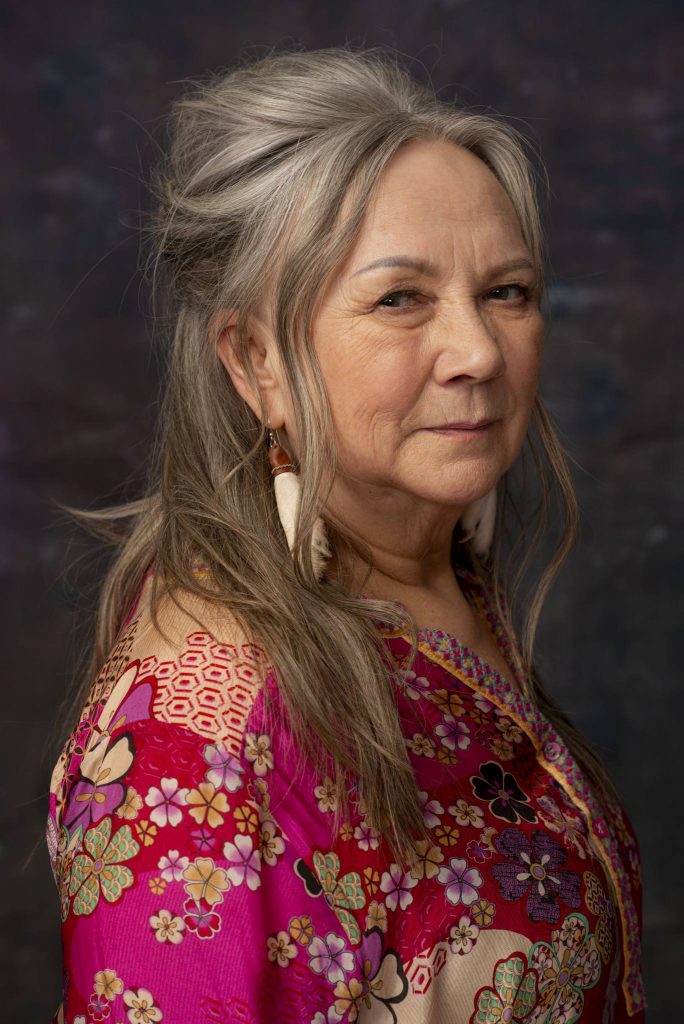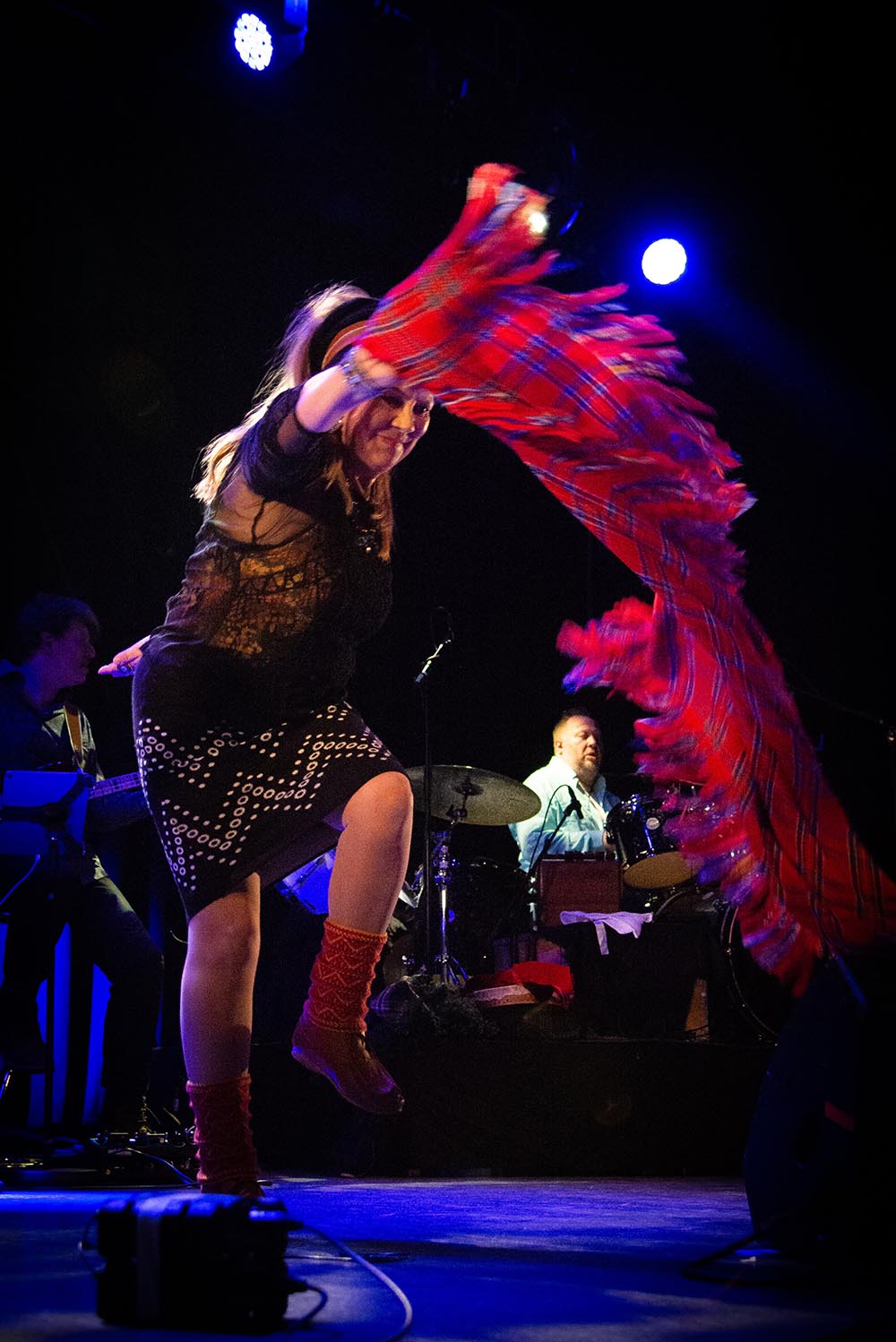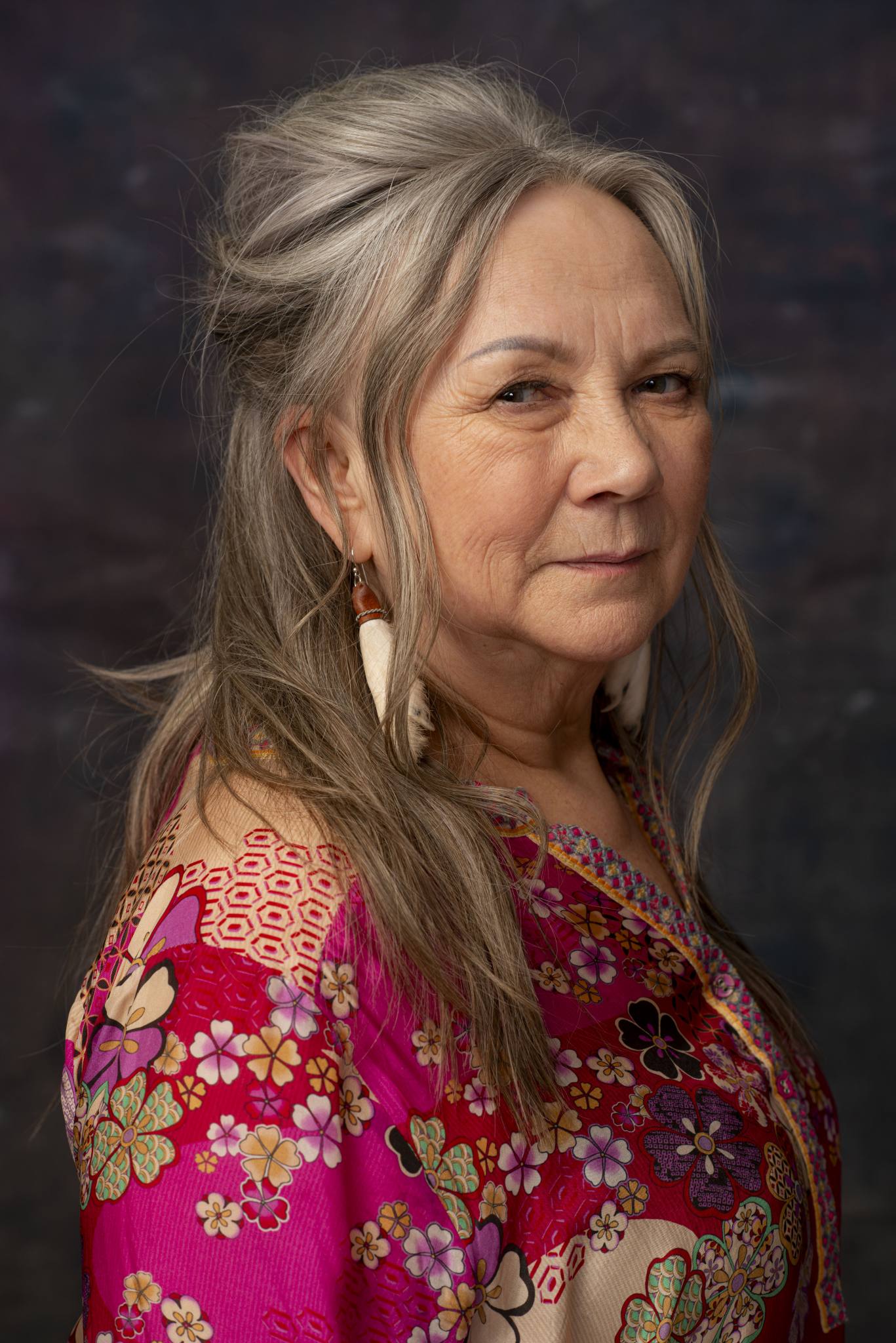
Close your eyes.
Then listen.
Really listen.
You’ll feel a voice before you even hear it.
It’s like none other.
It’s a voice that brings the landscape alive with a mesmerizing purity; a voice that represents a thousand years of ancestral connection to an unyielding frozen space.
This is Mari Boine.
Musician.
Songwriter.
Singer.
A genre-bending trailblazer with a taste for jazz, folk, rock, and world.
An artist whose music is inspired by and infused with her Sámi roots.
A woman who knows who she is, where she’s come from and what she stands for.
A music icon who has inspired indigenous artists the world over.
Mari Boine. She’s got soul.
“It’s completely irrelevant what you call her music.
Her music blends seamlessly into the rhythms and sound picture of our times.
She could have sung her songs a thousand years ago or a thousand years into the future and still retained the same depth and resonance.
In other words, it is like Mari Boine’s voice reveals just the smallest sliver of eternity,” said one critic about her album Gávcci Jahkejuogo (Eight Seasons).
“a good language to sing in, so rich for the voice”
When Mari Boine made her music debut in the early 1980s, she was an angry young woman. And she had every right to be. Christianity, repression of the Sámi language and the oppressive culture of “the big men down south” – these all weighed heavily on the mind of a girl raised in her native language but discouraged from performing traditional joik. After all, it was “devil’s work.”
We had no records or television in our home.
My strict religious parents never allowed that.
We did own a radio, but it was restricted to listening to the news, weather forecasts and Sunday church service,” says Mari.
“But of course, when our parents were out or at night, we discovered music from all over the world on those radio channels.
In fact, I first heard jazz on that radio”.
Outside the family home, Mari absorbed the music of nature, like the wind “singing” and in spring – birdsong.
Performing first in Norwegian and English, Mari eventually switched to her native tongue Sámi – “a good language to sing in, so rich for the voice,” she said.
Mari channeled her personal and political frustration into the 1989 breakthrough album Gula Gula, which propelled her into popular culture both at home and internationally and gave her a platform to advocate for Sápmi.
By telling my own personal story as a Sámi, I feel I’m sharing a piece of my people’s story.
“It is not that I was always a political activist,” she says. “And I certainly never profess to represent Sápmi.
It’s just that music gave me a profile and gave me a platform, so I used it.
By telling my own personal story as a Sámi, I feel I’m sharing a piece of my people’s story.
After all, my songs describe the pain of oppression and the struggle to reclaim self-respect, but I also sing about the joy of growing up within a culture that has such a close bond with nature.”
In 1993, Mari’s album Goaskinviella (Eagle Brother) was awarded the Norwegian equivalent to a Grammy.
A decade later, Mari was recognized with the Nordic Council’s Music Prize.
This special award acknowledged her artistic achievements, but also her ability to connect with a global audience while still maintaining her integrity as a Sámi.

To make peace with her demons is what Mari Boine engages herself in on her latest album «Alva», whilst stepping back over the threshold to a world she once left behind. She never looked back as she abandoned a strict religious upbringing – close to being brainwashed by shame and oppression. That was before she understood what her important, and sometimes very lonely mission would be: to introduce a whole world to the Sámi people’s culture through music.
With a voice that penetrates layers – and together with her accompanied musicians – she still draws focus upon parts of the indigenous people that up until our time were in denial of their existence and culture. A people who prohibited themselves from living as their culture required. Those who were silenced had become their own enemy because colonization had left them with self-hatred and fear.
It was never easy to understand that her own people were the ones wishing she would stop the joik song. They rejected it, not at all prepared to deal with it. How would they manage the underlying trauma? They claimed she called upon the devil. But Mari Boine is never giving up her belief that her people will come to terms, there has been an improvement:
“Bring out, breathe out the stories
that ask to be told
With your light feet
trespass the border of time”
(«Dánsso fal, mu vàhkaran» / «Keep on Dancing, Váhkaran»)
Grand Success With the Norwegian TV show «Every Time We Meet»
Mari Boine’s participation in the popular musical TV show «Every Time We Meet» / «Hver gang vi møtes» has been a great success at TV2 in the first part of 2024. The show invites famous artists and asks them to interpret each others’ music, with them representing all musical genres. Many viewers have come to know Mari Boine in whole new ways through her personal stories about her life and upbringing, not to talk about her mesmerizing interpretations of the other artists’ famous songs. The other artists have expressed their deep respect for Mari Boine and several have said that her music has been the most challenging to interpret. – I have wiped away some tears, says Boine about her participation in the TV show, but confirms that there was a lot of laughter and good times.
Annicken Dedekam Råge/ADR 2024
Albums
2024: Alva
2023: Gula Gula Reissue
2023: Amame
2017: See The Woman
2013: Gilvve Gollát – Sow Your Gold (Live featuring Norwegian Radio Orchestra)
2009: Sterna Paradisea
2008: It ain´t necessarily evil/ Remixed 2
2006: Idjagieđas/In the Hand of the Night
2002: Gávcci jahkejuogu/Eight Seasons
2001: Ođđa hámis/Remixed 1
1998: Bálvvoslatnja/Room of Worship
1996: Eallin (Live)
1994: Leahkastin/ Unfolding
1993: Goaskinviellja/ Eagle Brother
1992: Møte i Moskva (With the band Allians)
1991: Salmer på veien hjem (Hymns with Ole Paus and Kari Bremnes)
1989: Gula Gula/ Hear the Voices of the Foremothers
1985: Jaskatvuođa maŋŋá/ After the Silence
Collaborations
2017: with Moddi on “Unsongs: The Shaman and the Thief”
2016: with Bugge Wesseltoft on “Somewhere in Between”
2016: with Nils Noa on “Nu duohta – So true”
2016: with Ferhat Tunç on“Kobani” and on “Dere Emirxani – River Emirghan (single)”
2015: with various artists on “Northern Soul – The Album”
2015: with Guren Hagen on “Herbarium 2, de beste”
2013: with various artists on “Hotel Sacher – Lounge”
2012: with Kohib on “Tirakan EP”
2012: with various artists on “Go Natt Vol.2”
2011: with various artists on “Durchatmen Vol.2”
2010: with Bluetech on “Love Songs to the Source”
2010: with various artists on “Norway Nights (Jazz Club)”
2010: with various artists on “Nuevas Divas del Jazz”
2009: with various artists on “Lifestyle2 – Dance Grooves Vol 1 (Budget Version)”
2009: with various artists on “Voices Of The World (My Jazz)”
2008: with various artists on “Ima ipmašat”
2008: with various artists on ““Lifestyle2 – Dance Grooves Vol 1 (International Version)”
2008: with Tom Middleton on “Renaissance 3D presents Tom Middleton”
2005: with Future Prophecies on “Warlords Rising”
2004: with Illumination on “The Chilluminati Remixes”
2001: with Inna Zhelannaya and Sergey Starostin on “Winter in Moscow”
2001: with various artist on “Cafe Del Mar Volumen Ocho”
2001: with various artists on “Future Jazz From Norway”
2000: with various artists on “Voices of the Real World”
1994: with various artists on “A Week or Two in the Real World”
1991: with Ole Paus and Kari Bremnes on “Salmer På Veien Hjem”
Highlights
- Collaboration with Peter Gabriel on “One World, One Voice” (1990) and on “A Week in the Real World” (1992).
- Collaboration with Jan Garbarek on “Twelve Moon” (1992) and on “Visible World” (1995).
- Commissioned works for Vossajazz (1994) and for Telemarksfestivalen (2005).
- Screen music/solo role in a Mona J. Hoel’s short film with “Vuolgge mu mielde bassivárrái/ Come with me to the sacred mountain” (1995).
- Co-wrote music for the German film adaptation of the “Hansel and Gretel” fairytale, directed by Anne Wild (2005).
- Co-wrote the soundtrack for the movie “The Kautokeino-rebellion” directed by Nils Gaup, with S. Schultz and H. Rundberg (2008).
Awards & Grants
Has received a number of awards, distinctions, and grants such as the Spellemann Awards (Norwegian Grammy), the Anders Jahres Award, Nordic Sámi Council’s Honorary Award, Nordic Council’s Music Award and the Norwegian Audio-Visual Fund’s large launching grant.
In 2009 she was appointed knight, first class in the Royal Norwegian Order of St. Olav for her artistic diversity.
